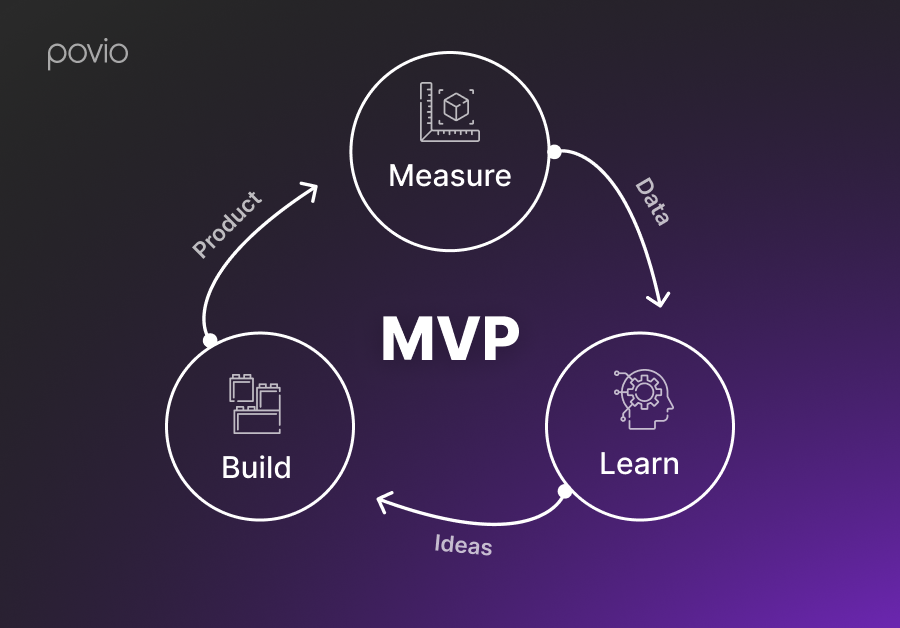Congratulations on crafting your Minimum Viable Product (MVP)! It's a significant milestone, marking the start of a remarkable journey toward product success. However, this moment isn’t the destination; it's the crossroads where planning for continuous growth becomes pivotal. After the exhilarating rush of introducing your product to the market, you've reached a critical juncture—shaping a roadmap for what lies ahead. It's crucial to maintain the team's momentum post-MVP and steer clear of losing sight of the next milestones.
Think of your MVP as the opening chapter of a novel—it's a fantastic starting point, but the real narrative unfolds from here.
Analyzing and Acting on Feedback
Let's dive into the world of feedback. You've received a ton of comments, opinions, and data from your initial users. What's the next step? It's time to dig into the wealth of insights found in the feedback. Consider feedback as a goldmine; your goal is to uncover those gems that will elevate your product.
This could be your guide:
Identifying Patterns: Delve into the feedback pool to spot recurring themes. Are users consistently pointing out a specific feature or bug? Pinpointing these trends is key to understanding user sentiments.
Understanding the Why: Knowing what users think is only part of the puzzle. Dig deeper to grasp why they hold these opinions. This deeper understanding becomes the compass guiding your decision-making process.
Prioritizing Improvements: Not all feedback carries the same weight. Filter and prioritize based on what aligns with your product's vision and what's realistically achievable. From the gathered feedback, curate a list of up to 10 primary improvements to integrate into the team's backlog.

Enhance and Evolve Your MVP
Now that you've combed through the feedback, it's time to level up your MVP. Balancing improvements and fresh features is the key to keeping both your existing and potential users satisfied. Here's your blueprint for making those upcoming releases pack a punch:
Prioritize User Experience: Think of enhancing your product like throwing the best party ever - it should be fun and intuitive and leave everyone raving about it. Every tweak or new addition should aim to amplify user delight and ease of use.
Tackle the Technical Debt: Remember those "we'll do it later" tasks during the MVP phase? It's time to pay off those debts. This might involve optimizations, resolving edge cases, or even revamping your tech architecture. It's like decluttering your workspace before diving into a new project - clears up space for innovation!
Think Small and Act Swift: Small steps, big impacts! Don't wait for huge updates; instead, sprinkle in continuous, bite-sized improvements. Regular small releases mean better adaptability, increased visibility, and happier users. It's like adding layers of paint to a masterpiece - each stroke adds depth and vibrancy.

Scale Smartly
As your product gains traction, more eyes are on you. However, growth brings its own set of challenges, some of which might not be directly linked to your product but to your team or organization. So, how do you expand without overstretching?
Assess Your Resources: Get a clear grasp of your limitations, whether it's your budget, team capabilities, or technological constraints. As your product evolves, so should your team. But remember, scaling too rapidly can have its pitfalls.
Plan Your Marketing: Define your target audience and strategize how to reach them effectively. Crafting a robust marketing plan is crucial to amplifying your product's visibility and attracting the right users.
Build a Community Around the Product: Your users aren't just consumers; they're your best advocates and a wellspring of genuine feedback. Engage with them, foster connections, and create a community around your product. Their insights and support can be invaluable on your growth journey.
Future Organizational Planning: Don't overlook future organizational needs tied to your product's growth. While rapid expansion might not be feasible at the moment, you should always have in mind scaling your team. Planning for future resource allocation and team growth is crucial. Anticipate potential risks while considering long-term scalability goals. Consider bringing on board individuals who not only possess the necessary skills but also resonate with your team's vision and long-term objectives. Values also play a pivotal role in this equation. Aligning values ensures a cohesive and harmonious environment, fostering collective growth toward shared goals.
Conclusion
Throughout this expedition, you've encountered pivotal checkpoints: analyzing feedback, enhancing your MVP, and scaling smartly. Each phase unveiled insights crucial to sculpting your product's destiny.
As you stand at this crossroads, envision your product's evolution not as a singular achievement but as an ongoing saga—a collaborative masterpiece in the making. Embrace the challenges, celebrate the victories, and remain steadfast on this exhilarating path toward product triumph.
